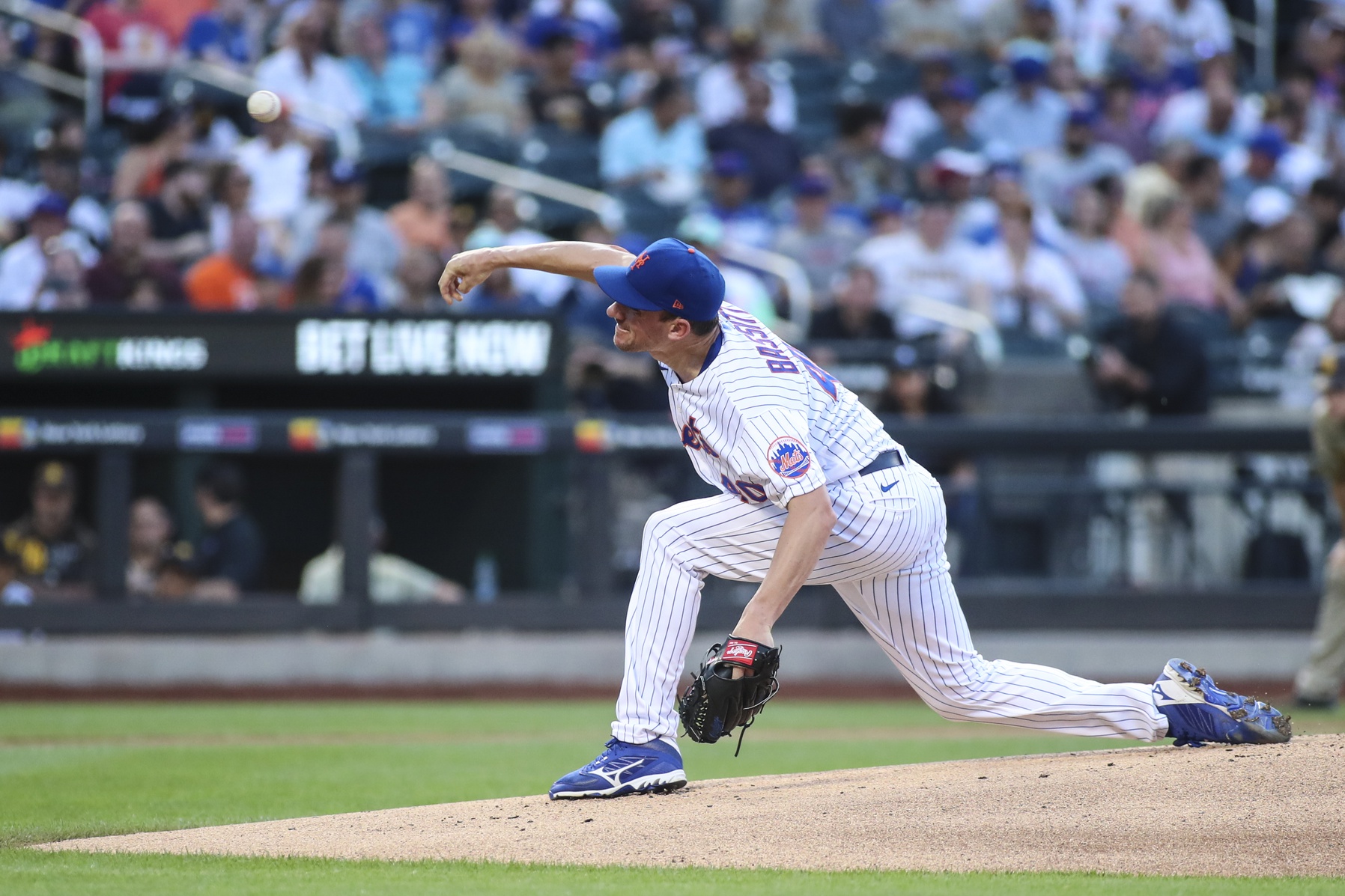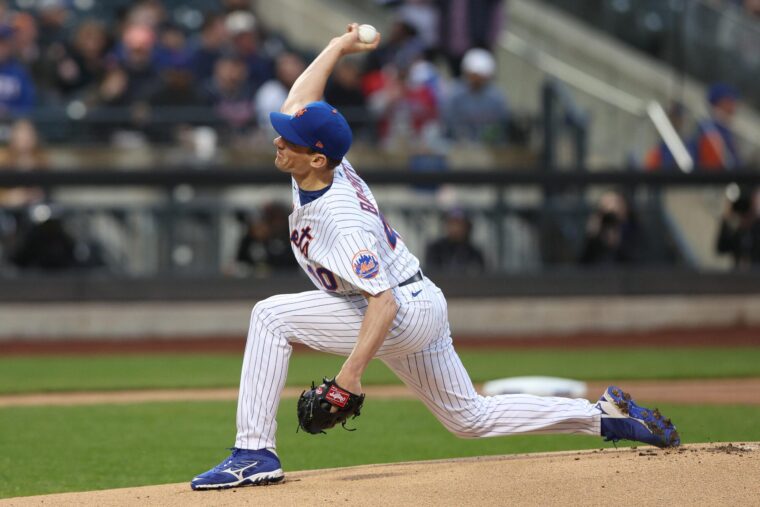
Wendell Cruz-USA TODAY Sports
Going into the 2022 season, the Mets were armed and ready to strut out a key 1-2 punch in pitchers Jacob deGrom and newly signed Max Scherzer.
Meanwhile, the rest of the rotation was up in the air. With the shaky performances of Taijuan Walker, and Carlos Carrasco, added to the uncertainty of what a Tylor Megill, Trevor Williams, or David Peterson could provide, the Mets were left without a solid number three starter. That notion changed as the Mets went out and acquired starter Chris Bassitt from the Oakland Athletics in exchange for J.T. Ginn and Adam Oller.
Bassitt, originally drafted by the White Sox, played six seasons with the A’s, adding up a W-L record of 30-24 with a 3.44 ERA total during those seasons in the bay area. As a pitcher, he loves to live in the strike zone, as his Zone % was at 47.2 over more than 250 innings since the start of the 2019 season.
Bassitt relies on six pitchers in his arsenal: a sinker (thrown 33.4% of the time), a cutter (17.2%), a slider (16.3%), a curveball (13.9%), a four-Seam Fastball (13.1%) and a changeup (6.1%). His fastball and sinker top out around 92-93 mph, while his breaking pitches top out around 70-85 mph. His sinker is his most used pitch, but his fastball is his most effective.
Whatever New York management saw in Bassitt, it seems to have been a good idea, as he had a reasonably successful first go-around in Queens. Pitching to a career-high 181 2/3 innings, he racked up a 3.2 WAR, a 15-9 W-L record, along with a 3.42 ERA and totaling 167 strikeouts, another career high for him in a single season. He also pitched to the tune of 8.27 strikeouts per nine innings, struck out at least 22 percent of the batters he faced, and only walked about 6 percent total during the season. He also held batters to a .233 average against, a 1.14 WHIP, a BABIP of .282, and left about 77 percent of runners he inherited on base.
Bassitt had a few bumps in the road during the season but did well in the majority of the starts he pitched in, including going 3-1 in April with a 2.25 ERA in 24 innings, as well as going 4-0 in August with a 1.62 ERA in 33 1/3 innings altogether. He struck out eight batters or more during nine starts throughout the season and struck out at least 20 or more batters every month, with June having his highest total with 35.
Starting the season essentially without a contract due to arbitration being delayed due to the lockout, Bassitt and the Mets avoided an arbitration hearing by agreeing to a one-year, $8.8 million contract with a $19 million mutual option for next season. This option also includes a $150,000 buyout option if both sides cannot agree on said option. The question remains, is Bassitt replaceable, and should the Mets decide to pick up his option and give it another go next season?
Currently, the Mets starting rotation is in a bit of flux, as the uncertainty of deGrom’s future in Queens hangs in the ether with his opt-out clause while the team can pick up options on Walker and Carrasco. Megill (pre-arb), Lucchesi (arb eligible), Peterson (pre-arb), and Scherzer (signed for 2 more seasons) are the only solid options the team currently has in the rotation. During the lengthy absences of deGrom and Scherzer, Bassitt proved vital in keeping the rotation intact and helped keep the team afloat during the regular season.
While there may be flashier options possibly coming up on the market, it’s safe to say that Bassitt’s numbers could be hard to replace, and it is undoubtedly in the Mets’ best interest to act on that option and keep him in Queens for another go-around. Although his final two starts of the season did not go as well as planned, Bassitt was about as dependable as one could get, notching a career-high in innings pitched in a league where starters either get hurt constantly or do not pitch as much as they used to back in the day. In a league where pitching depth is essential, this should be a no-brainer for the Mets, and Bassitt is a Met in 2023.
















